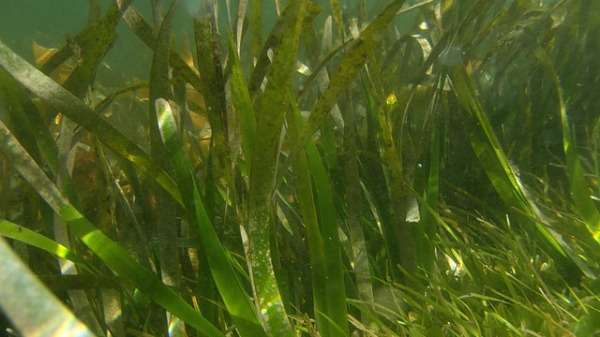Albany seagrass points to historical pollution

Seagrass meadows in Albany's Oyster Harbour are being used as history books to reveal fluctuating contaminant levels in harbour water throughout the last 3000 years, with a rapid increase in contamination since the 1900s.
Analysing contaminant concentrations over time will help solve mysteries such as the loss of vast seagrass tracts from the harbour in the 70s and 80s, Edith Cowan University researcher Dr Oscar Serrano says.
The research indicates harbour contamination began around a hundred years ago, most likely due to human activities, and has increased exponentially since then.
Most of the contamination likely came from local activities like developing agriculture, Dr Serrano says, but there was also a "global component" from coal combustion and pollution in the atmosphere.
Dr Serrano has already applied this method to seagrass meadows in Spain, and hopes it can be used around the world to better understand how human activities contribute to ocean contamination.
He compares seagrass meadows to ice cores, tree rings and stalagmites when it comes to reading the earth's history.
"We can use these seagrass sediments as books to reconstruct the past…they form a kind of library," he says.
The library is created over thousands of years as seagrass meadows trap suspended particles within their canopy, creating a natural archive of contaminants that accumulate—layer upon orderly layer—at the plant's base.
As newer plants grow vertically above them, older plants are buried in sediment, thus recording environmental signals.
"Seagrass sediments are very anoxic [low in oxygen] and protected from erosion, and so lots of material gets preserved in the sediments…it's quite an unusual phenomena in coastal areas," Dr Serrano says.
Reading into the past
To read his library, Dr Serrano removed a 1.5m deep sediment core of Posidonia australis from the Oyster Harbour estuary.
He divided the core into 1cm thick slices that he correlated to particular dates, going back 3000 years.
"We used two methods for dating the sediments, both based on radioisotopes," Dr Serrano says.
He then analysed each slice for its organic content before determining the concentration of a dozen different chemical elements preserved in its sediments.
In calculating chemical concentrations, Dr Serrano corrected for fluctuating organic content, since sediment with more organic matter can accumulate more metals.
He found the greatest contaminant concentrations in the top 1–8cm, corresponding to sediment from the last 35 years.
More information: Oscar Serrano et al. Reconstruction of centennial-scale fluxes of chemical elements in the Australian coastal environment using seagrass archives, Science of The Total Environment (2016).
Journal information: Science of the Total Environment
Provided by Science Network WA
This article first appeared on a science news website based at Scitech.

















